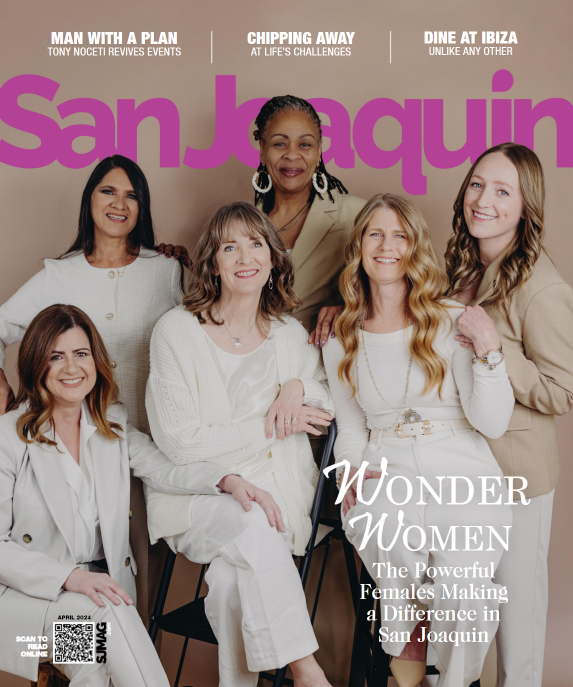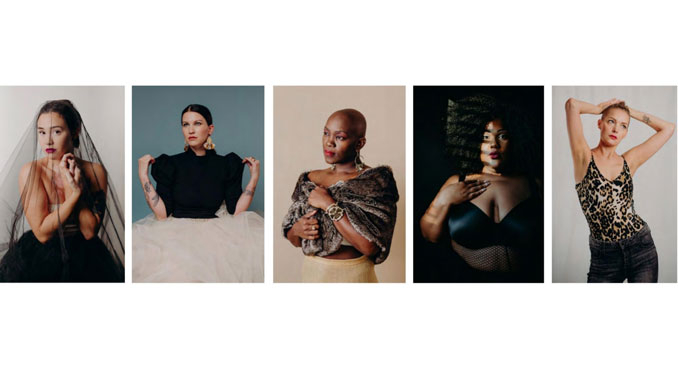
At 39 years young, Shannon Rock is a strong, confident, and successful woman. She is a proud business owner, a celebrated photographer, a partner in a thriving, loving relationship, a generous daughter, and a friend. However, this wasn’t always the case. Up until recently—and sometimes even still—Shannon has struggled with aging. “I am starting to grieve the loss of youthful beauty,” Shannon says. “I have been plagued with a terrible fear of getting ‘old’ because society rarely calls older women beautiful.” It’s not just one feature—it’s the whole of them. As women, aging doesn’t carry the same graces as it does for men. Our breasts may sag after childbirth, our legs get cellulite, crow’s feet appear, and our necks begin to wrinkle. Even the texture of our skin begins to morph in a way that signals an impending doom (thank you beauty industry!). “I can’t tell you how many times as a photographer I am asked to edit out these ‘imperfections’ and it breaks my heart,” Shannon says.
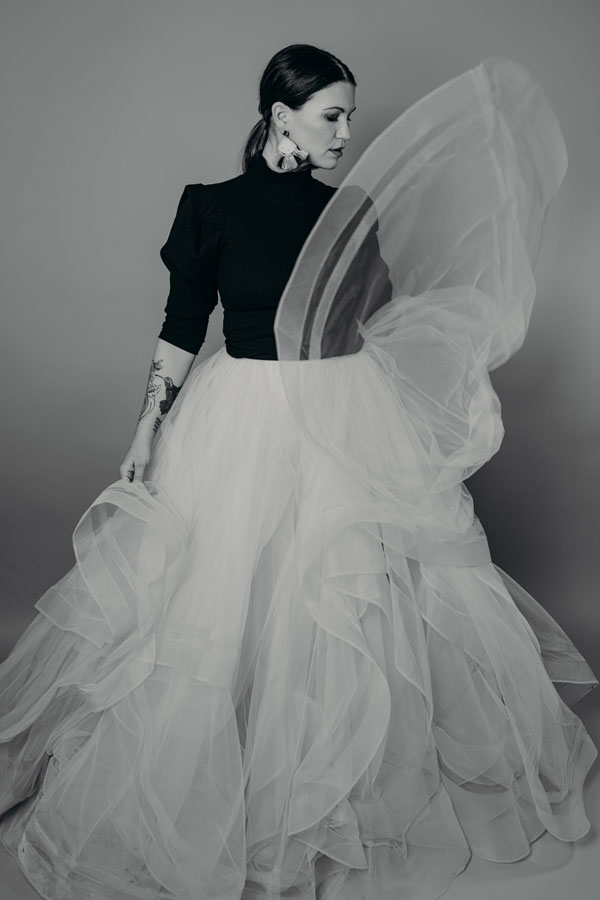
Shannon, a former model herself, has started to feel the pressures of perfection in her own image. She has struggled to embrace the lines on her face, thinning hair, flabby arms for all the world to see every time she raises a camera to her face. And her same insecurities were echoed in the subjects of her photographs, women asking Shannon to edit them to look younger, more, dare we say, beautiful? “I so intensely have wanted to band together with other women and redefine what beauty really means,” Shannon says.
It was that desire coupled with a chance meeting of a photo subject who had recently undergone a breast implant removal after double mastectomy—she is now flat chested and scarred after 17 surgeries, but also beautiful, bold, and owning her unconventional, yet still womanly body—that jumpstarted a passion project Shannon had wanted to pursue for years. (The subject’s name is Tara Heinzen, see the San Joaquin Magazine October 2020 issue for her full story).
Tara’s story coupled with Shannon’s past, which includes an abusive relationship in her 20s that ended in a broken arm and a final awakening that proved to Shannon her worth, a childhood filled with ridicule and violent bullying that fed an unhealthy need to be liked by others, a lack of confidence inside of herself even as she pursued a career in the arts and dabbled in modeling, and a tragic and sudden loss of her father at a young age toiled together before it manifested into this revealing and empowering opportunity Shannon created for herself— a photography book celebrating new norms of beauty and the women who are fierce enough to speak out and speak up for those everywhere struggling to see their own worth and magnificence. With Shannon behind the lens, these fine art portraits will be styled either high-fashion, intense or offbeat, creating dramatic editorial imagery that evokes the emotions portrayed by these brave, vulnerable and strong subjects as they show off their bodies lived in, born this way, or just plain different from society’s most accepted ideals of beauty.
“I am taking this moment to hopefully open some eyes and hearts, to those women and men who feel weakened by the pressures of society’s definition of beautiful, those who feel different about their imperfectly perfect bodies, or think that those wrinkles and signs of age aren’t stunning depictions of the wisdom you have, to be raw, to be open, and to declare, you are beautiful – just as you are,” Shannon says.
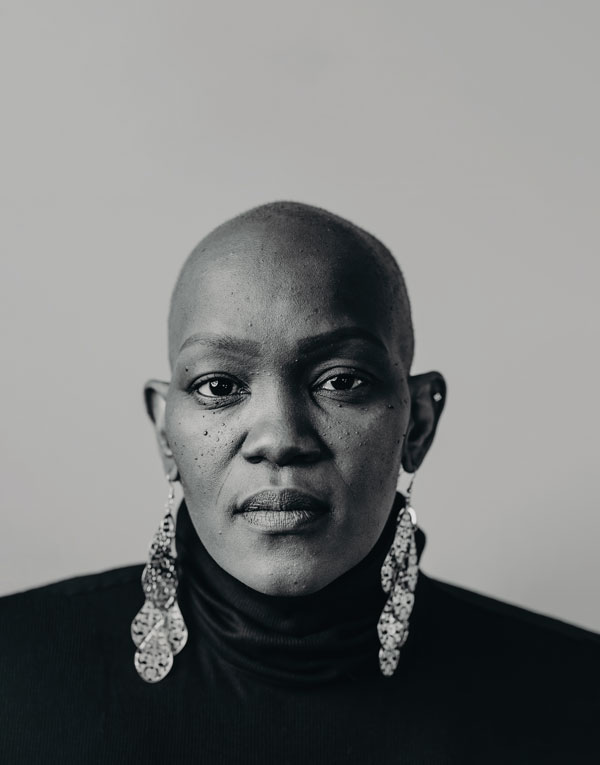
Strength Through Battle
Many women struggle to accept themselves. Physical features, whether it’s the size of their nose or their body, a skin condition they were born with or a limb difference they obtained later in life, can threaten the very core of what being a woman is. It can also make women question their own beauty and desirability to others. But it seems that many women outspoken about breaking these norms have endured something deep and meaningful to find clarity, and through that fight they have emerged victorious and better than they were before.
Tatum Turner was diagnosed with stage 2B breast cancer just before her 40th birthday, a diagnoses that took her mother when Tatum was just 14 years old. For 26 years, Tatum lived in fear of developing cancer. “Being a woman with breast cancer has shaped my idea of beauty because it can distort everything that society feels is beautiful,” she says. Tatum is African American, and like most ethnic women, she has dense breast tissue, which has been associated with a higher risk of breast cancer. Currently undergoing chemotherapy and with surgery on the docket, Tatum’s body is changing. She utilized cold cap services— a close-fitting silicone cap that cools the scalp during treatments—during infusion appointments, trying desperately to keep her hair. Throughout the years, with braids, perms, press and curls, weaves, wigs, and more, Tatum was very attached to her hair. But when it started coming out in long strands, she saw no other choice but to part ways with it. “One Saturday evening I discovered that I am not my hair and the weight of my problems and strife left on that day,” she says. “All the worries and the trauma of being a dark skinned black girl left me and I felt inspired, light, redeemed, and happiness of just being me…. When my 12-year-old looked at me and said ‘Mama, you are so beautiful,’ everything that concerned me left and I was ready to rock my perfectly shaped head.”
Losing her hair was just one physical woe in a lineup of many. Tatum also has scars from infusion treatment and the medication has had unpredictable side effects from illness to mouth sores to depression. She’s developed boils. “The idea of being intimate is another whole story and challenge,” she says.
Rebecca Nowak, too, was diagnosed with breast cancer. The diagnoses came at 31 years old when her third son was just eight months old. An attempt to fight the cancer naturally didn’t work, and she underwent numerous treatments for cancer that had metastasized to her liver, abdomen, spine, pelvis, and brain. She is currently cancer-free.
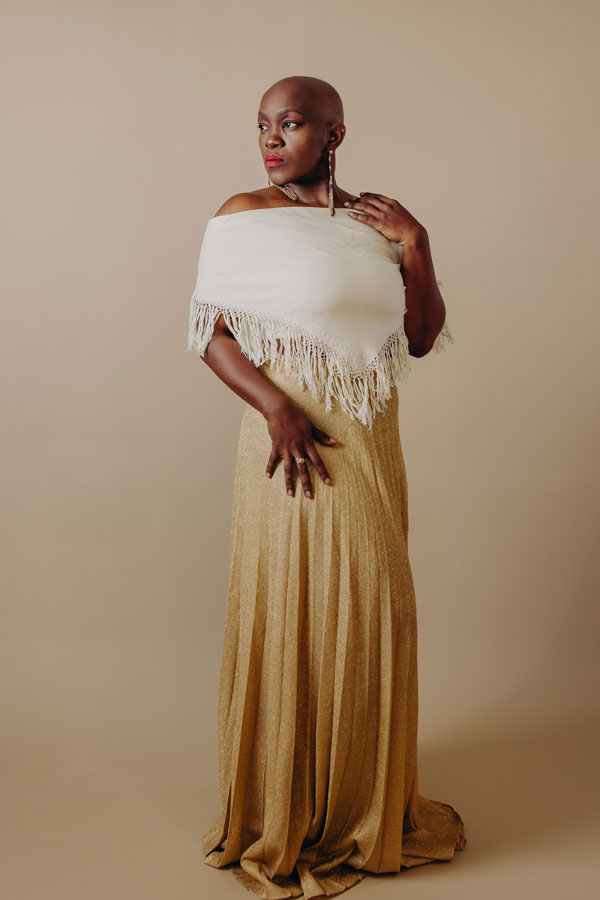
As a result of her port, a necessity to receive life-saving drugs, Rebecca developed a pronounced scar near her collarbone. She remembers coming home from the hospital, not far from death. “I came home after nearly dying; very jaundice, skeletal, and sick looking. I said to my mom ‘I look so ugly,’” Rebecca recalls. Other moments of insecurity have crept in, too. But between three births and a battle with cancer, Rebecca reminds herself that her body has been through hell and back, and that is beautiful.
Anne-Allyce George was in her 20s when she noticed a tiny spot on her left hand. At first, she assumed it was a scar that would fade, but instead of getting smaller, it began to grow. Anne-Allyce had vitiligo, a rare condition where the skin loses pigment cells and creates the appearance of light-colored spots. Since Anne-Allyce’s skin was already pale, she didn’t feel the spots were too noticeable, until they began to pop up in new places. “The skin around my nails started to change (lighten), and I got a spot the size of a dime in the very center of my décolletage. That spot has grown to the size of a pear,” she shares. One of the most common reactions she gets from strangers is asking what methods she’s tried to fix her “spots.” Her response? Her vitiligo is nothing that needs to be fixed.
While some women begin to struggle with confidence and physical beauty as they age or undergo a traumatic event, others’ experiences start young, and can be even more difficult to cope with. As a teenager, Shyla NAME attempted suicide twice. She was depressed, and as a full-figured African American girl, felt like she didn’t fit in. “I’d say I still struggle with being treated differently because of my body. I feel like it stems from stereotypes that claim that fat people are sloppy, smell bad, and just overall lazy. None of which I am,” she says.
The bullying Shyla endured came from the usual suspects—kids at school—but she also felt judged by people in her life who should be lifting her up, whether it was intentional or not. As a child, Shyla hated doctor’s appointments. Her pediatrician point-blank would call her fat and recommend extremely restrictive diets to help Shyla slim down. Her grandmother once offered to pay her one dollar per pound she lost as encouragement to shed some weight, which made Shyla feel like something was wrong with her, even though she wasn’t in pain and didn’t feel physically ill.
At AGE, Shyla still struggles with being different, but now it’s more about how others treat her than how she treats herself, although her insecurities aren’t all in the past. Dating, she says, can be difficult, as she often finds herself friend-zoned. “I’ve been rejected many times, in many aspects in my life because of my size,” Shyla says. “I’ve been picked last and just flat out told I couldn’t do certain things because I couldn’t fit the outfits.” Constantly told she was too big to dress like other girls and that she should avoid short dresses, swimsuits, tank tops, and other feminine clothes based on her size, all of Shyla’s ideals surrounding beauty have been consistently challenged.
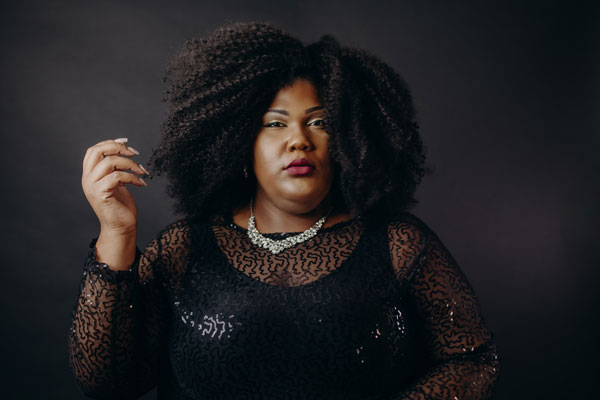
Building Confidence
“Every time I turn on the television, open the magazine, or even browsing the internet, society’s standards of beauty tell me I’m not beautiful,” Shyla says. Over the years she’s been able to build confidence and practice self-love. “It has taken a lot of time, patience, and hard work to change my mindset. I still have to tell myself every day I am beautiful, I am loved, and I am strong.”
Self-love is an ongoing journey for Shyla, and it isn’t a perfect one. She has her moments of feeling rejected still but focusing on her daily affirmations helps. She holds back criticism of her own body and replaces the negative thoughts with positive thoughts and ideas. “I do struggle with my confidence at moments, but I put my head up higher and make my back straighter and push through those moments,” Shyla says.
After shaving her head, Tatum began to accept her new look. Bodies continuously change and with more treatment and surgery on the horizon, Tatum’s physical journey is far from over. She says learning a new body can be both depressing and liberating. “My ideals surrounding beauty have definitely changed because I feel so naturally beautiful and I feel like I’m so thankful to be just be alive,” Tatum says. “The extreme measure I took to find beauty seem shallow now and shedding the stress of what society places on women to be beautiful is no longer part of my regimen.”
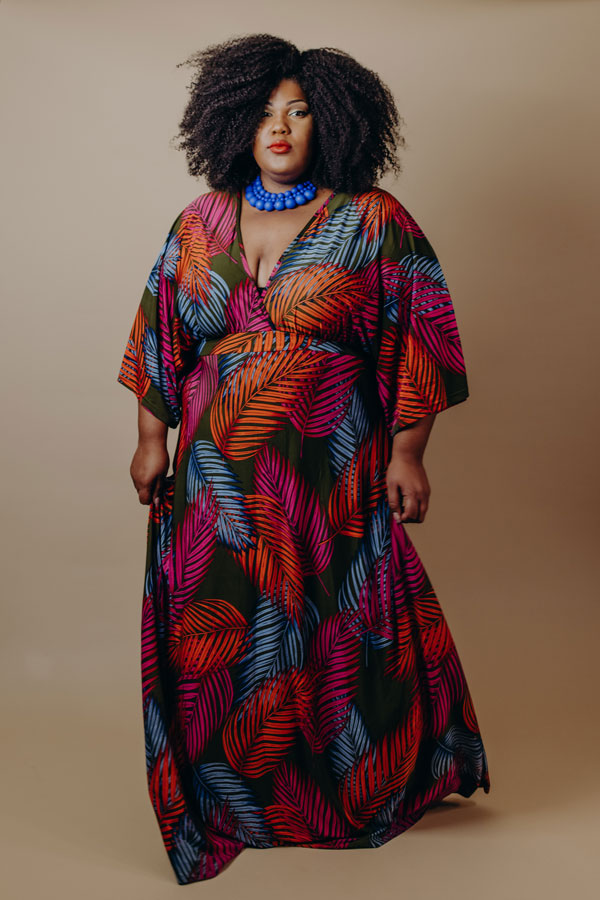
For Tatum, her ability to find peace in her evolving appearance is rooted in faith. Pushing negativity out is the key to inner confidence, as is the reminder to be gentle with herself. “I find comfort in myself and that’s the best confidence you can have because it’s hard to spend time with your worst critic,” says Tatum.
Rebecca, too, donned a bald head. “I was bald-bald for a good five months,” she recalls. For her, it was the inability to blend in that made her feel self-conscious. She was rocking the bald look, all praise from those closest to her and sweet reminders of just how beautiful she was from her husband, but the new look was captivating, and everyone took notice. She had to get comfortable with not being able to blend in.
In the beginning, Anne-Allyce says she was embarrassed by her changing skin. Her acceptance—now ten years in the making—wasn’t immediate. Eventually, however, instead of shying away from the attention her skin called to her, she began to embrace it. “Once I realized that it wasn’t going anywhere and it’s what my skin was going to look like for the rest of my life, I didn’t feel uncomfortable anymore,” Anne-Allyce says. Most of her moments of insecurity stemmed from wanting to look like everyone else. The dreaded Instagram scroll would turn up photos of women with flawless skin, and Anne-Allyce would feel pricks of envy. The feeling, luckily, was fleeting. “I enjoy being different and having skin that looks like no one else’s,” Anne-Allyce says. “If you think about it, even others with vitiligo don’t have the same spots as mine. My spots are completely unique to me… that’s pretty cool!”
Acceptance
Accepting the path God chose for Tatum is one way she is coping with her ever-changing body and bucking the attachment to those physical attributes she used to find so important. “You can rewrite your story and create your own definition of beauty,” Tatum says. Working on her inner self is most important now—that and focusing on her health. Instead of fighting the hair loss, the scars, and the side effects, Tatum has chosen to fight the cancer. She’s embracing her bold new look and seeing her bald head as a sign of beauty and resilience. “You can’t change your journey, but you can make it better.”
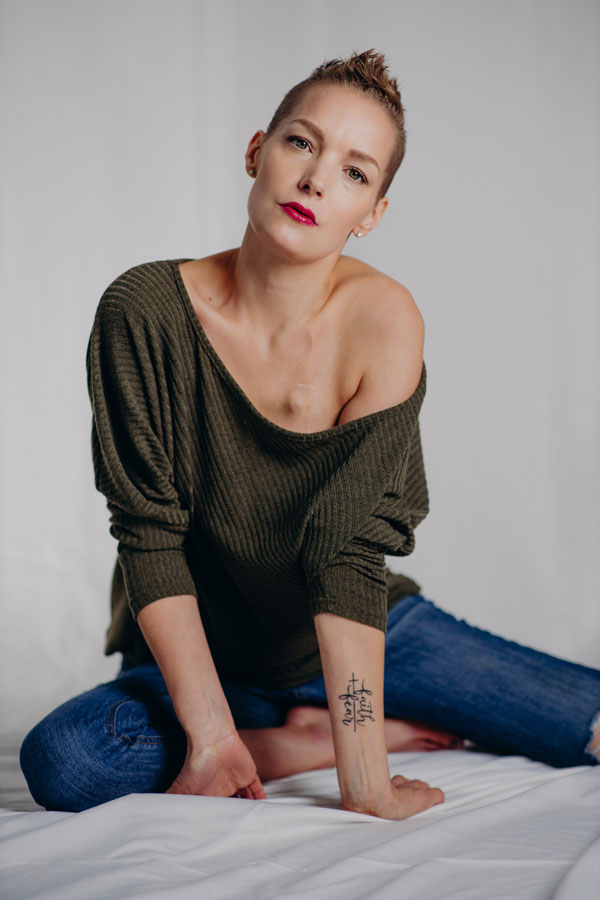
Anne-Allyce learned to love her vitiligo by accepting it as part of who she is, and that’s the same tactic she applies to the rest of her changing body. Turning 30 triggered a lot of physical changes in Anne-Allyce—an idea most women are familiar with. “I find myself constantly longing for what once was. As time goes on, I look at past pictures of myself and wish I looked the way I did last year or several years ago,” she says. Ultimately, she has chosen to focus on what’s inside to shine a light that will illuminate her outsides.
Acceptance does not mean you will not struggle still; it doesn’t mean that your thoughts surrounding physical beauty are one hundred percent healthy and you’re cured from self-criticism, but it does mean you’re working to love yourself. “What makes me beautiful is all of me inside and out, from my kind and giving heart; my goofy, blunt, and opinionated personality; all the way to the outer me: my eyes, my lips, my size, and my big hair,” Shyla says. “As a woman you are always under pressure to be thin, to be pretty, to be stylish, to be nice, and to be everything for everyone at some point in time. It took me until recently to figure out what I like, what I think it’s beautiful, and that it’s okay for that to be many different things.”
While it’s important that self-love and beauty come from within, sometimes we need the support of others to pull ourselves out of a dark place or embrace a new image. Rebecca had always valued scars. On others she found them glorious stories of a life lived, so she didn’t struggle too much with the bold new accessory on her skin. Other ways her body changed, however, were a struggle, and the gentle reminders of her beauty from others—friends who said they liked her no-hair look, her husband’s reminders that he found her attractive, reassurance from her own mother—helped her accept her changing form and become comfortable in her new skin.
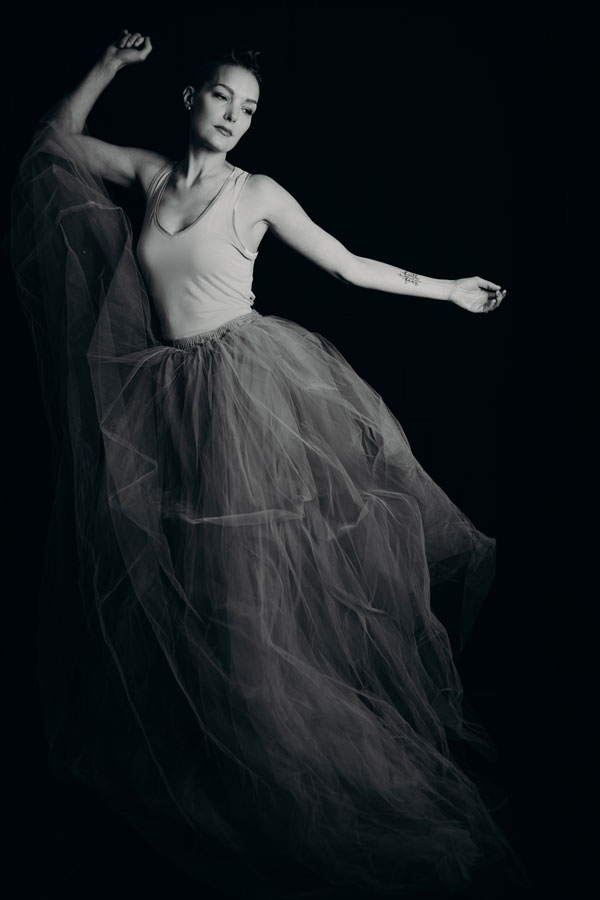
Shannon, too, has learned to value her scars—both physical and emotional. Instead of letting them hold her back, she embraces them, let’s them make her better. She feels pain every time she holds a heavy camera, something left over from the broken elbow that never fully healed. But Shannon won’t let the pain someone else gave her hold her back. It’s her message to the world that she can’t be stopped. Today, Shannon’s scars remind her to push forward. “I am strong, determined, and confident. Something I wasn’t before.”
Shannon’s emotional scars are more prominent, echoed in the way she chooses to live her life every day, letting them humble her and expose perfection for the myth it is. She’s given herself her own scars, too—etchings to honor the pain of the past. These are her tattoos, one of which is prominent in her company logo; a semicolon to signal the emotional pain that comes with losing a loved one to suicide—in this case her father—and the survivors suicide leaves behind, like herself.
Changing the World
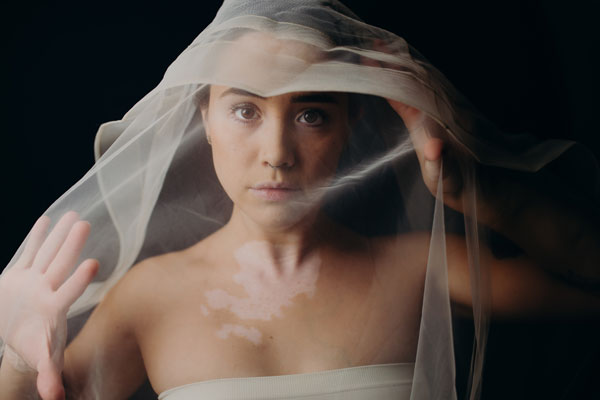
For Anne-Allyce, being a mother—her daughters are 11 and 7—Is another piece of the puzzle when it comes to self-acceptance. Much as people ask Anne-Allyce how she will fix her vitiligo, she wants her daughters to know that their differences are not something to be changed. She calls it a wildly necessary lesson for young girls. “You don’t need to be ‘fixed’ just because you look different or not ‘normal.’ You are who you are and that is beautiful!” Ultimately Anne-Allyce wants her daughters to grow up with the influences and resources to form their own opinions on everything, including beauty, and to embrace their own natural attributes may it be vitiligo or curly hair. “This is such an amazing time to raise a daughter because women all over the world are making history every day and showing my girls that there are no limits to their potential.”
While cancer changed Rebecca’s outside, it also gave her a new perspective on life. Her insides, perhaps, morphed even more. “It’s made me more thankful for life, health, relationships, motherhood,” Rebecca says of cancer. “It’s made me more empathetic and intentional about loving others. I can be a barer of hope and encouragement to those that may be facing the scariest thing in their lives.”
Shyla sees the merits of Shannon’s project. She hopes Redefining Beauty will become a source of self-love and acceptance for other women struggling with their physical appearance. “I will tell other women… honey you are beautiful in any size and if you can’t see that, you need to open your eyes. Love yourself, every inch and every pound. Love yourself now because tomorrow isn’t promised.”
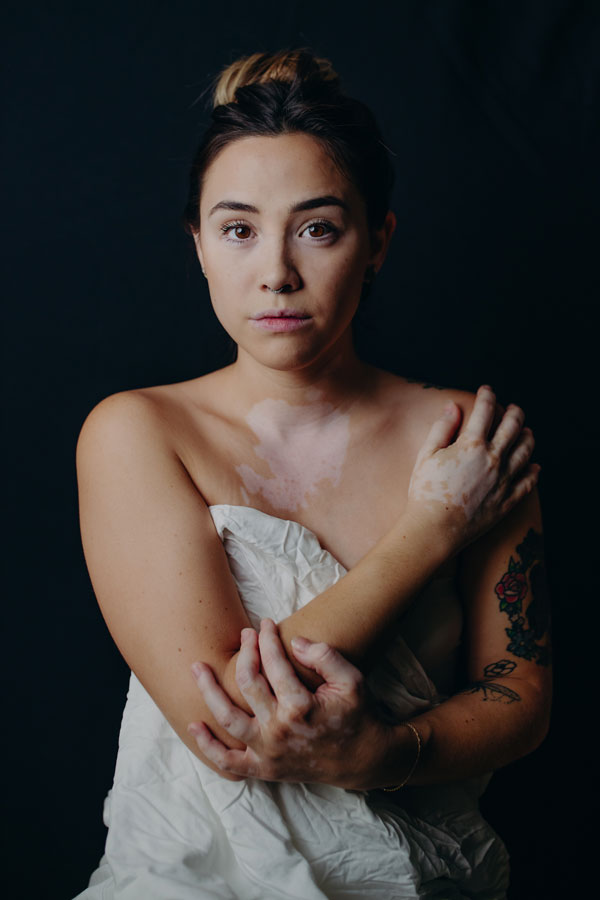
“Over the course of the next year, I will be looking to uplift and showcase courageous people of all genders, colors, backgrounds, and sizes. I want to raise awareness and change the face of beauty in this world,” Shannon says. It was originally her goal to focus the project on women and the harsh beauty pressures we face, but through development, Shannon has decided to incorporate stories from men, transgender individuals, the LGBTQ community, and more. Her goal is to produce eye-catching photo spreads accompanied by personal stories that redefine what it means to be beautiful in today’s society for everyone, and to help people find the acceptance she has found, and is still pursuing, in her own journey.
